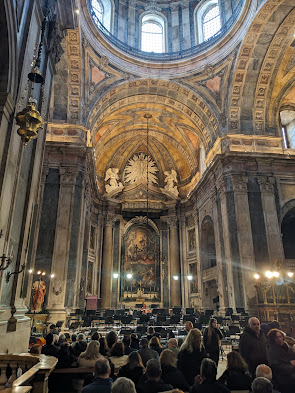Gulbenkian Orchestra Tackles Stravinsky
The concert by Lisbon's Gulbenkian orchestra last week featured three early twentieth century works of diverse affect, conducted by US guest conductor Robert Treviño. The contrasts made for a really enjoyable concert. The Faure Suite from Pelléas et Mélisande (1898) is a compilation from his incidental music to the symbolist Maeterlink play being premiered in London in 1898. The music is pleasant enough, more like a backdrop to an atmospheric video game. It nicely evokes the lovers wandering around in the mist, and most famous for the popsy flute-heavy Sicilienne . In this performance the flutist's tone did not quite have the depth and projection of the best performances. A pleasant opener, but better music on this subject is to be found in Debussy's 1902 opera. Completely different was the Piano Concerto for the Left Hand by Ravel (1930). This is vigorous piece was composed for the pianist Paul Wittgenstein (brother of the Austrian philosopher Ludwig). Wittgen...

